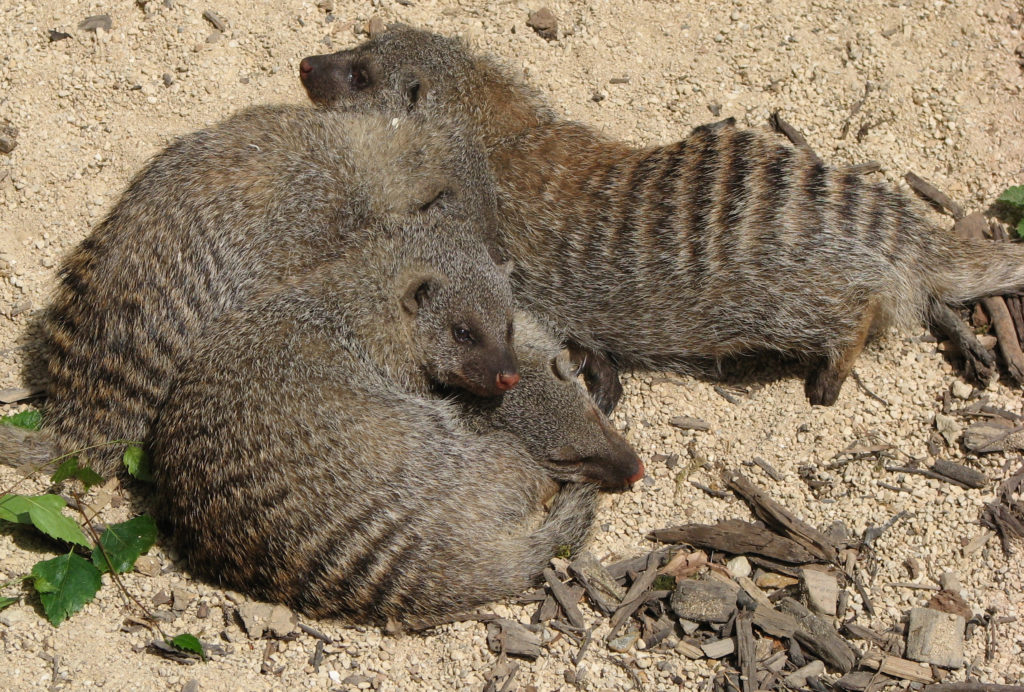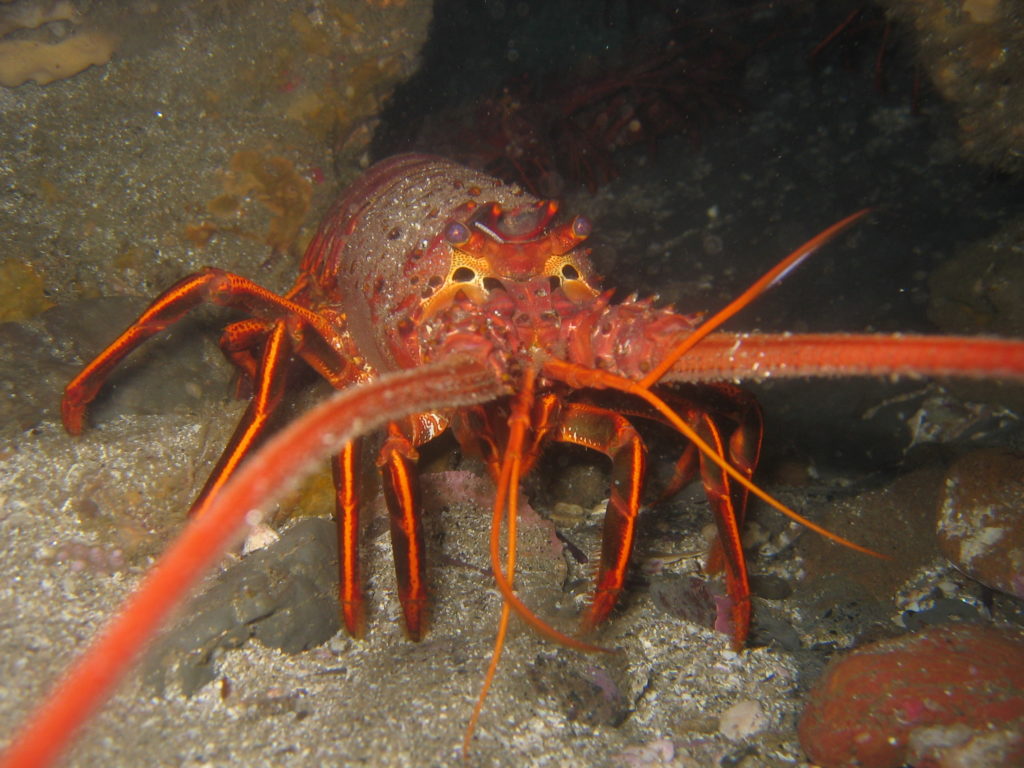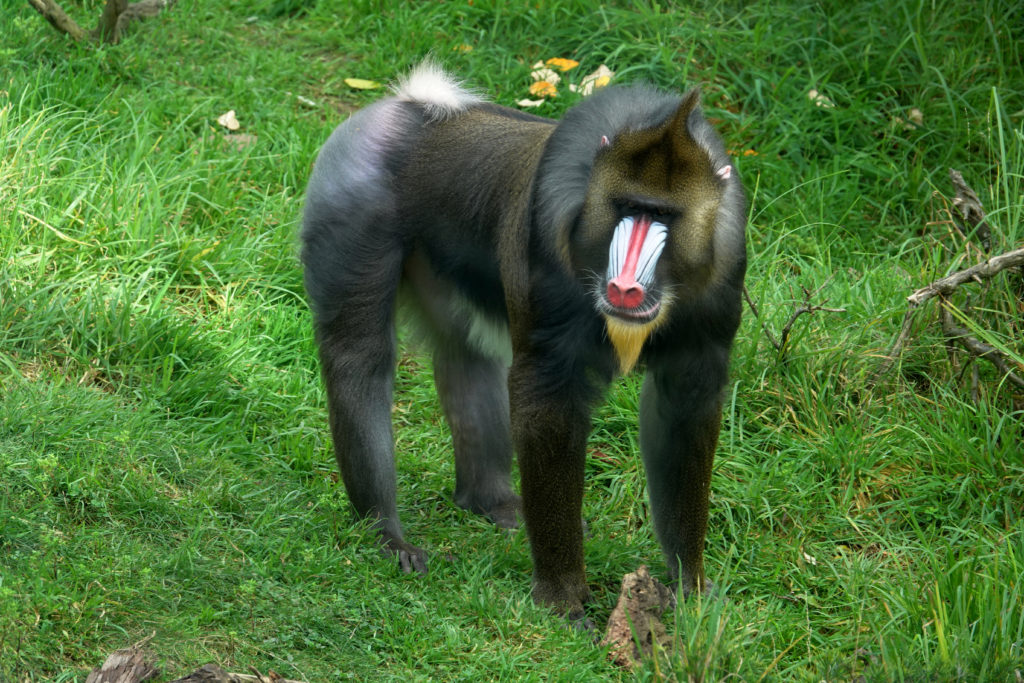For many of us, the current SARS-CoV-2 pandemic means working from home. For many, working from home means being away from human companionship that’s normally part of our work lives. While my four-legged office mates are quiet and do not require meetings, they are no substitute for human coworkers.
How about you? In our socially distanced world, do you find strength in the knowledge that others are also self-isolating to stay healthy?
What if I told you that numerous animal species, lobsters to mongoose, ants to mandrills, all practice social distancing to avoid infectious agents? Here are a few examples.

M is for Mongoose
The banded mongoose (Mungos mungo) of sub-Saharan Africa, is one of the most social creatures known. They live and hunt in troops consisting of both extended family members and nonrelated individuals. Troops may include as many as 40 individuals.
These social creatures rank high on the touchy-feely scale, not only grooming each other, but also sleeping in mongoose piles.
As Fairbanks et al. wrote in 2014, when a banded mongoose gets sick, their behavior changes significantly and they don’t reciprocate grooming. However, they are still groomed by troop members at the same rate as when the affected mongoose was healthy. And they don’t remove themselves from the troop, nor are they ostracized by troop members. It’s possible that in such highly social animals, where survival is dependent on proximity to others, social distancing isn’t a safe practice.
One piece of evidence to consider with this lack of social distancing, might be the means by which the disease that Fairbanks et al. studied, caused by Mycobacterium mungi, is transmitted. In a 2016 paper by Alexander et al. the means of transmission of M. mungi was shown to be primarily through skin injuries, with disseminated disease only found in late stages of infection. Thus, it’s possible that mongoose troop members recognize that grooming doesn’t present a risk of infection, and grooming of sick troop members continues.

Lobsters Are Social Too
On the other hand, the spiny lobster seems to take social distancing very seriously, being quite sensitive to the presence of lobsters that aren’t well.
Spiny lobsters tend to be night owls. After a night out hunting for mollusks, lobsters head home to their rocky den for protection from predators. Lobsters often share dens. But if a lobster enters a den containing a lobster that’s infected with a virus known as Palinurus argus virus 1, the healthy lobster will leave. P. argus virus 1-infected lobsters emit a particular odor that’s noticed by other lobsters. This virus is contagious and often fatal, and studies in both lab settings and in the wild show healthy lobsters moving away from sick individuals, even if the sick lobster is behaving normally.
It’s social distancing. The lobsters know that the virus is present and that it can spread beyond the sick lobster, and they avoid it.
Similar behaviors have been noted in studies of birds, insects, fish and monkeys. The social behavior of monkeys is possibly most relatable, as our closest animal relative.

Social Distancing Mandrills, Most of the Time
Mandrills are the largest of all monkeys. Somewhat similar in appearance to baboons, mandrills are native to the west central coast of Africa where they live in large groups, foraging together and participating in mutual grooming. Mandrill groups provide protection from predators such as leopards, African pythons and eagles that prey on young or sick mandrills.
Mandrill family groups can range from 10 to more than 100 individuals, including extended relatives. Poirotte et al., writing in Science Advances in 2017 noted, however, that when certain mandrills carried heavy intestinal parasite loads, those individuals were avoided at grooming time. The parasites are shed in feces, so proximity to the affected mandrills puts healthy tribe members at risk.
The researchers showed that mandrills could detect heavy parasite loads by rubbing bamboo with the feces, then presenting pieces of bamboo, either with or without parasites, to healthy mandrills. The mandrills could detect the heavy parasite loads and avoided the bamboo with parasite-laden feces.
However, later studies showed that mandrills would forego social distancing for close relatives. In 2020 Poirotte et al. published findings showing that grooming of close relatives occurred despite infection of those relatives with parasites.
Ants Practice Social Distancing Too
Stroeymeyt and colleagues examined the behavior of black garden ants, in regards to a disease caused by a lethal fungus (Metarhizium brunneum). The spores of this fungus are passed ant to ant by physical contact. The spores infect the ant, causing illness within 24–48 hours of exposure. Stroeymeyt et al. used this lag between exposure and illness to determine whether ant behavior changed after contact with the fungus.
The researchers attached tiny digital tags to track ant movement. They then exposed the forager ants, those that leave the colony to find food, to fungal spores. Control forager ants were dabbed with a sterile solution. The ants in 11 fungus-exposed colonies were then compared to controls in the same number of nonexposed colonies.
The forager ants from infected colonies, both those infected and the healthy foragers, immediately began to distance themselves from the colony. And in the colony, the reproductively valuable queen and nurse ants moved the brood further into the nest to avoid the fungus. These studies did not identified how the ants detect the fungus, but the findings show definite social distancing, as a means of blocking spread of the fungal disease, and protecting themselves as well as other colony members.
Animals, in the most simple of ways, show us both the necessity of keeping family and friends close, and in certain disease situations, the importance of staying apart. For animals, it seems to depend on the nature of the infection, and severity of the consequences. A lesson for this time, that we can all embrace.
Reference
Hawley, D. et al. (2020) Animals Apart. Scientific American 323:2, 36–41. doi:10.1038/scientificamerican0820-36
Related Posts
Kari Kenefick
Latest posts by Kari Kenefick (see all)
- Cell-Based Target Engagement and Functional Assays for NLRP3 Inhibitor Profiling Help Identify Successes and Failures - January 25, 2024
- Illuminating the Brain with a New Bioluminescence Imaging Substrate - April 13, 2023
- Made Just for You: Promega Custom Reagents - October 28, 2022
